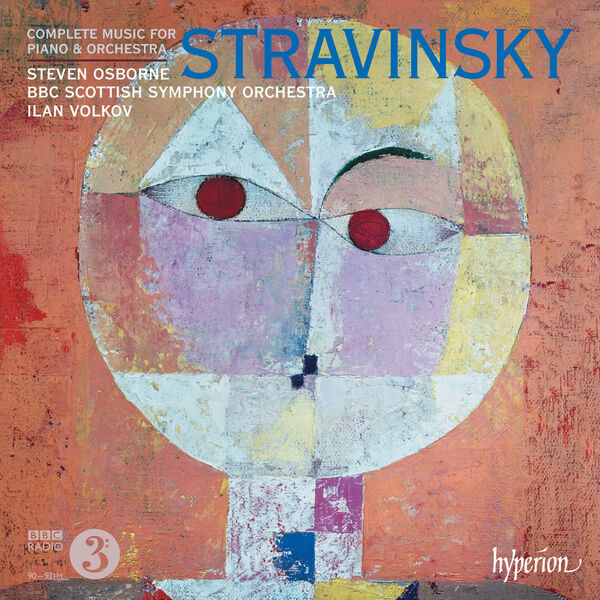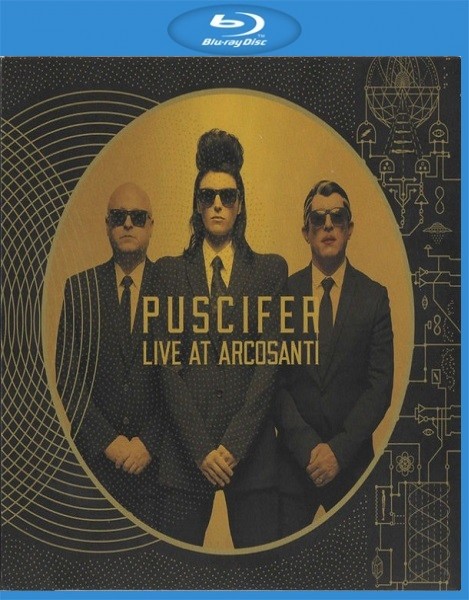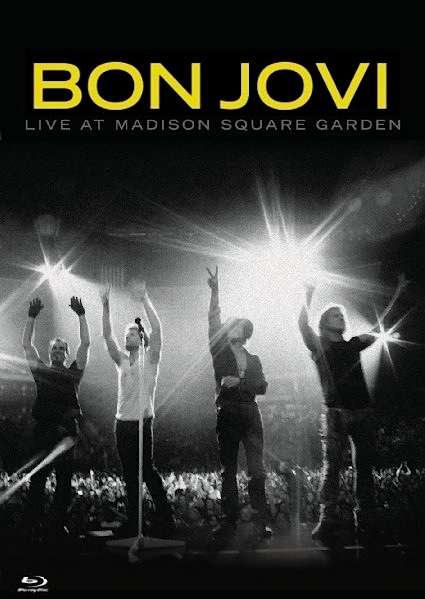
Steven Osborne, BBC Scottish Symphony Orchestra, Ilan Volkov – Stravinsky: Complete music for piano & orchestra (2013)
FLAC (tracks) 24 bit/88,2 kHz | Time – 01:00:15 minutes | 916 MB | Genre: Classical
Studio Masters, Official Digital Download | Front Cover | © Hyperion
A new album from the Gramophone Award-winning team of Steven Osborne, the BBC Scottish Symphony Orchestra and Ilan Volkov. Here they present Stravinsky’s complete music for piano and orchestra as a rare complete set, plus the Concerto in D for string orchestra. The taut rhythmic brilliance of this music is perfectly suited to the particular artistry of these performers. Volkov’s mastery of Stravinsky’s neo-classical idiom is clear from the ecstatic critical response to his recordings of many of the composer’s orchestral works.
Igor Stravinsky enjoyed a lifelong association with the piano. From his earliest childhood works to a few preliminary sketches for a piano sonata left incomplete at the time of his death in 1971, the composer was seldom far from the keyboard. His piano works often serve as harbingers for larger, more familiar compositions. One often sees new contrapuntal patterns, new textural outlays, and new harmonic combinations emerging in a piano work just before appearing in the larger symphonic and choral works. Stravinsky himself referred to the piano as the ‘fulcrum’ of his compositional discoveries. The simple truth is that, in comparison to some of the composer’s landmark compositions such as The Rite of Spring, Symphony of Psalms, and the Symphony in Three Movements, his piano literature (including the works on this recording) is too often unjustly neglected. Yet each piano work, while significant in itself, also opens new doors to understanding Stravinsky’s sustained compositional evolution.
Stravinsky’s setting of the Song of the Volga Boatmen, scored for winds and percussion, captures the ancient spirit of a nation that remained unbendingly resilient. Over the years this iconic Russian folksong drew the attention of many composers, Mili Balakirev’s arrangement being perhaps the best known. Stravinsky’s Swiss exile during the First World War had stirred nostalgic feelings for his lost homeland as evinced in several settings of folk tales he knew as a child. With the 1917 February Revolution fresh in his mind, his memories grew particularly vivid. The composer supposedly prepared the arrangement of the Volga melody as a favour to Sergei Diaghilev. The Ballets Russes impresario needed a new work to replace the traditional playing of the Russian National Anthem ‘God Save the Tsar’ before performances. But the request for a new anthem actually came directly from the recently instated Russian parliament. Stravinsky’s manuscript reveals that he initially entitled the arrangement Hymne à la nouvelle Russie. The composer literally scored the famous song overnight, dictating the music to his friend Ernest Ansermet who dutifully took down every note. Stravinsky added a piano reduction of the work just below the orchestration. The manuscript also includes a colourful red banner on the cover, sketched by Stravinsky’s friend Picasso as an acknowledgement of the Russian Revolution.
In addition to composing and conducting, Stravinsky assumed the role of a touring concert pianist for the better part of three decades. Written for his own unusually large hands, his piano music is idiosyncratic, and consequently often prodigiously difficult. The composer undertook concertizing with typical fervour. He devoted hours to honing his pianistic skills while also studying with the well-known pedagogue Isidore Philipp. Given his concerns about the excessive ‘emotive exploitation’ of his works by other interpreters, Stravinsky often retained the exclusive rights to public performance for years before permitting others to play his piano works.
The Apollonian virtues of neoclassicism’s clarity and leanness, to which the composer had been steadily drawn, were made unmistakably evident in his landmark Octet for wind instruments of 1923. Immediately following the Octet came the Concerto for piano and wind instruments, wherein the piano takes on a virtuoso concertante role, partnering an equally important wind ensemble (with no strings other than double basses). The Concerto was written in Biarritz in 1923–4 and dedicated to Natalie Koussevitzky, whose husband, Sergei Koussevitzky, conducted the May 1924 premiere in Paris with Stravinsky as the soloist. This three-movement work opens with a Largo written in the style of a French Overture. The stylized dotted rhythms quickly give way to a mechanistic Allegro reminiscent of many of the hard driving movements found among Bach’s keyboard Partitas and English Suites. The form of the first movement is somewhat akin to a classical concerto, complete with a developmental middle section that brings to mind the Czerny and Hanon keyboard studies familiar to all budding pianists. The recapitulation leads to a rhythmically complex, jazzy piano cadenza in the style of Gershwin, disclosing just how taken by American jazz, especially ragtime, Stravinsky had become. The movement ends with a return to the opening stately French Overture material.
The middle movement, originally written as a Larghissimo but changed to Largo in the revised 1950 score, incorporates a wondrously serene cantabile style of piano writing not often found in Stravinsky’s music of the 1920s. The movement’s two melismatic cadenzas carry a very rare rubato marking, while the pianistic writing is clearly rooted in the highly ornate filigree so often encountered in the slow movements of Beethoven’s early piano sonatas.
The closing Allegro, with its percussive opening material built around open fourths and fifths, exhibits a satirical pastiche blending café tunes, jazz rhythms and even a Baroque-styled fughetta that appears out of nowhere. Taken as a whole, the movement bears a clear relationship to the keyboard toccatas of the eighteenth century, with rapid changes of contrasting and often seemingly unrelated material. Stravinsky performed the work nearly fifty times over the next few years, and its success spawned the composition of several subsequent works for solo piano, two pianos, piano and orchestra, and piano and violin.
Composed in 1928–9 mostly in Nice, the Capriccio for piano and orchestra is, in effect, Stravinsky’s second piano concerto. So eager were audiences to see the composer perform his own works that he was regularly urged to write a sequel to his Concerto for piano and wind instruments. Indeed Stravinsky was in such demand as a pianist that he could only compose intermittently, as his touring would allow. The Capriccio was the only new work written in 1929. It is of comparable length to the earlier Concerto; but the similarities stop there. Here the composer employs a full orchestra rather than a wind ensemble and takes full advantage of the addition of strings. Moreover, the piano writing stands in stark contrast to the earlier Concerto. While the outer movements of the Concerto were firmly rooted in the piano’s natural percussiveness, the Capriccio is far more lyrical. There are still passages that hark back to the assertive writing of such wind works as the Octet and Concerto for piano and wind instruments, but for the most part the Capriccio’s melodious writing reflects Stravinsky’s more recent compositions, especially the two important ballets Apollo and The Fairy’s Kiss. As for the title, the composer wrote in his Chronicle that he had in mind a fantasia, meaning a freely structured form that would give voice to a more impromptu-like, capricious style of writing.
The first movement begins with an introduction marked Presto that quickly gives way to the movement’s main material—displaying piano writing that explores the entire keyboard in an unending, continuously expansive manner. From start to finish, with little opportunity for the soloist to grab a breath, the pianist must shape the long, mellifluous lines as part of an unbroken fabric. The movement ends with a restatement of the opening material.
The heading of the middle movement, Andante rapsodico, indicates that the composer was once again writing in an almost improvisatory style, replete with rapid rhythmic figurations of nine-, eleven- and thirteen-note groupings. The resulting flights of fancy are reminiscent of the highly ornamental embroidery evident in the music of Carl Maria von Weber, who, as Stravinsky recalled in his Chronicle, exercised a ‘spell’ over him at the time.
This second movement leads without pause into the final Allegro capriccioso ma tempo giusto from whence the title of the work springs, since this third movement was in fact composed first. The form is stricter here, adhering to the principles of a classical rondo. The perpetual-motion writing that propels the movement is brilliantly spun throughout both the piano and orchestra.
The Capriccio was premiered at a Paris Symphony concert in December 1929 with Stravinsky at the piano and his friend Ernest Ansermet on the podium; the composer later revised the score in 1949, but only with minor alterations. Nearly forty years after its premiere, the Capriccio found a new home on stage with George Balanchine’s 1968 ballet Jewels, in which Stravinsky’s music was employed in the ‘Rubies’ section of this perennially popular New York City Ballet production.
Completed in late July 1959, Movements marked by far the composer’s most intricate serial work to date—his ‘most advanced music’ as he declared in Memories and Commentaries. Scored for piano and an orchestra that included a harp and celesta, this astringent, compactly structured work assigns the most important role to the solo piano. Initially, in fact, Stravinsky entitled the work Concerto for piano and groups of instruments. But he soon did away with the description since the piano does not serve the same role it occupied in his earlier two works for piano and orchestra. Here the keyboard’s use is more compressed, more of a contributor to the chamber music environment in which it finds itself.
The piano seems to have assumed the role of a solo instrument as a consequence of a commission by Swiss magnate Karl Weber, who wished to have a Stravinsky piano piece for his wife Margrit to perform. Movements was premiered at the Town Hall in New York in January 1960 with Weber at the piano and the seventy-eight year old Stravinsky conducting. Originally there were five short movements (without individual titles and carrying only metronomic indications), including four even briefer intervening sections, marked as ‘interludes’, of only a few bars without piano (although by the time the work was published those headings were dropped). The work outlines a lexicon of serial techniques: rotations, retrograde inversions, hexachordal transpositions and combinatorial segmentations—all within an unmistakably pointillistic orchestral structure. Stravinsky’s close examination of the music of Krenek and the piano pieces of Stockhausen at that time evidently left an imprint. The score of Movements reveals a pianism unlike anything Stravinsky had written before. The piano itself establishes a timbral constancy right in the centre of kaleidoscopically changing patterns of contrasting instrumental colours. Occasionally the piano is heard alone, but even then only briefly. Most often it is found in combinations with one of the orchestral ‘choirs’. Spatially, the pianism is also notably Webernesque in its exploration of the entire register of the keyboard. Compositionally, the work is a testament to Stravinsky’s ongoing vitality at the age of seventy-seven, and his remarkable embrace of the most advanced, contemporary serial techniques.
Also known as the ‘Basle Concerto‘, the Concerto in D was commissioned for the Basel Chamber Orchestra (Basler Kammerorchester) in 1946 by Paul Sacher, the conductor of the ensemble. Sacher was not only an advocate of Stravinsky during the composer’s lifetime, but in the 1980s he established the Sacher Stiftung in Basel, where the vast majority of the composer’s archives are now held. This elegant string concerto was written at a time when Stravinsky was acclimatizing to Los Angeles and the dizzyingly popular musical styles to which he was constantly exposed. As a result, the composer dabbled in film music, wrote ballet music for a Broadway revue, and completed a work in the jazz idiom, the ‘Ebony Concerto‘ for Woody Herman, written just before the ‘Basle Concerto‘.
Scored for the full complement of strings, the Concerto in D fully explores the richness of a full-blooded string ensemble in much the same way as his earlier Concerto ‘Dumbarton Oaks’ (1937–8) exploited the opportunities afforded by a chamber orchestra for both strings and winds. The ‘Basle Concerto‘’s string writing runs the gamut of special techniques including cleverly employed spiccato and pizzicato writing often juxtaposed with beautifully lyrical writing assigned to various parts of the orchestra. The Concerto is cast in three movements and displays neoclassical writing at its cleanest—unadorned and alternately gritty and graceful without artifice. The jutting silences and syncopations obvious throughout the first movement, for example, are characteristically Stravinskian in the way they energize the music’s flow. The second and third movements reveal a composer still committed to the ‘tension and release’ formula of tonality but increasingly allowing prolonged dissonances to stand on their own without immediate resolutions. The work was composed entirely in Hollywood shortly before Stravinsky undertook his landmark ballet Orpheus, also notable for its luminous string writing.
Written for full orchestra, including piano and harp, the Canon (on a Russian Popular Tune) is one of Stravinsky’s least-known works. The composer originally entitled the piece Canon for Concert Introduction or Encore in the manuscript copy. Written quickly in 1965, and constituting an interruption in the middle of composing the monumental Requiem Canticles, it is merely a minute in duration; but its brevity belies a fascinating web in the canonically intricate treatment of the famous ‘Coronation’ theme from the finale of the composer’s 1910 ballet The Firebird. Thematic inversions and augmentations of one of Stravinsky’s most memorable folk tunes abound as they snake their way through the separate strands of the orchestra. The switching back and forth between duple and triple time signatures provides a throwback to the alternating asymmetrical metres of the original ballet score. Stravinsky, who sometimes wrote little canons as gifts to his friends, composed the work as a memorial tribute to his old friend Pierre Monteux, who had died a year earlier.
Tracklist:
01. Steven Osborne, BBC Scottish Symphony Orchestra, Ilan Volkov – Song of the Volga Boatmen (01:18)
02. Steven Osborne, BBC Scottish Symphony Orchestra, Ilan Volkov – Concerto for piano and wind instruments: I. Largo – Allegro – Maestoso (07:01)
03. Steven Osborne, BBC Scottish Symphony Orchestra, Ilan Volkov – Concerto for piano and wind instruments: II. Larghissimo (06:38)
04. Steven Osborne, BBC Scottish Symphony Orchestra, Ilan Volkov – Concerto for piano and wind instruments: III. Allegro – Agitato – Lento – Stringendo (04:54)
05. Steven Osborne, BBC Scottish Symphony Orchestra, Ilan Volkov – Capriccio: I. Presto (06:43)
06. Steven Osborne, BBC Scottish Symphony Orchestra, Ilan Volkov – Capriccio: II. Andante rapsodico (04:55)
07. Steven Osborne, BBC Scottish Symphony Orchestra, Ilan Volkov – Capriccio: III. Allegro capriccioso ma tempo giusto (05:26)
08. Steven Osborne, BBC Scottish Symphony Orchestra, Ilan Volkov – Movements: Quaver = 110 (02:50)
09. Steven Osborne, BBC Scottish Symphony Orchestra, Ilan Volkov – Movements: Crotchet = 52 (01:26)
10. Steven Osborne, BBC Scottish Symphony Orchestra, Ilan Volkov – Movements: Quaver = 72 (01:07)
11. Steven Osborne, BBC Scottish Symphony Orchestra, Ilan Volkov – Movements: Quaver = 80 (01:58)
12. Steven Osborne, BBC Scottish Symphony Orchestra, Ilan Volkov – Movements: Quaver = 114 (01:55)
13. Steven Osborne, BBC Scottish Symphony Orchestra, Ilan Volkov – Concerto in D: I. Vivace (06:07)
14. Steven Osborne, BBC Scottish Symphony Orchestra, Ilan Volkov – Concerto in D: II. Arioso: Andantino (03:08)
15. Steven Osborne, BBC Scottish Symphony Orchestra, Ilan Volkov – Concerto in D: III. Rondo: Allegro (03:36)
16. Steven Osborne, BBC Scottish Symphony Orchestra, Ilan Volkov – Canon on a Russian Popular Tune (01:03)
Personnel:
Composer: Igor Stravinsky
Performer: Steven Osborne
Conductor: Ilan Volkov
Orchestra/Ensemble: BBC Scottish Symphony Orchestra
Download:






![BBC Scottish Symphony Orchestra, Philharmonia Orchestra, Dimitri Mestdag, Laurent Ben Slimane & Martyn Brabbins – Mythologies and Mad Songs (2024) [Official Digital Download 24bit/96kHz]](https://imghd.xyz/images/2024/05/15/tg8egvtoh6vpa_600.jpg)
![BBC Scottish Symphony Orchestra – Bartok The Wooden Prince (Final Version) (2024) [24Bit-192kHz] FLAC [PMEDIA] ⭐️](https://imageurl.xyz/images/2024/04/01/ab67616d0000b27319f25e9fbe823e4c0d477317.md.jpg)
![BBC Scottish Symphony Orchestra – Bartók The Wooden Prince Divertimento Romanian Folk Dances (2024) [24Bit-192kHz] FLAC [PMEDIA] ⭐️](https://imageurl.xyz/images/2024/04/01/ab67616d0000b27319f25e9fbe823e4c0d477317751ce1d342b98106.md.jpg)
![BBC Scottish Symphony Orchestra, Thomas Dausgaard – Bartok: The Wooden Prince (Final Version) (2024) [Official Digital Download 24bit/192kHz]](https://imghd.xyz/images/2024/03/30/j2iemuayh8k1a_600.jpg)
![BBC Scottish Symphony Orchestra – Tchaikovsky Orchestral Works Vol. 2 (2024) [24Bit-96kHz] FLAC [PMEDIA] ⭐️](https://imageurl.xyz/images/2024/03/16/ab67616d0000b2736f5c960d29aaba5c40d6cc4e.md.jpg)
![BBC Scottish Symphony Orchestra & Alpesh Chauhan – Tchaikovsky Orchestral Works Vol. 2 (2024) [Official Digital Download 24bit/96kHz]](https://imghd.xyz/images/2024/03/14/vouo9wlwg8tlc_600.jpg)
![BBC Scottish Symphony Orchestra – Elgar Enigma Variations; In the South & Other Orchestral Works (2016) [24Bit-96kHz] FLAC [PMEDIA] ⭐️](https://imageurl.xyz/images/2024/01/28/ab67616d0000b273814a85edc5933c2f5a4366d2.md.jpg)
![Melani Mestre – Albéniz Concierto fantástico– Granados Concerto Patético (Hyperion Romantic Piano Concerto 65) (2015) [24Bit-96kHz] FLAC [PMEDIA] ⭐️](https://imageurl.xyz/images/2024/01/28/ab67616d0000b273a80df0f53c894730596c1cba.md.jpg)
![Steven Osborne – Debussy: Études & Pour le piano (2023) [Official Digital Download 24bit/192kHz]](https://imghd.xyz/images/2023/11/28/uzipj8fd3bizb_600.jpg)
![Klangforum Wien, Peter Evans, Johannes Kalitzke, Tim Anderson, Ilan Volkov – Lucia Dlugoszewski: Abyss and Caress (2023) [Official Digital Download 24bit/96kHz]](https://imghd.xyz/images/2023/11/17/ykue5tcab58ca_600.jpg)
![Ludmil Angelov, Vladimir Kiradjiev, BBC Scottish Symphony Orchestra – The Romantic Piano Concerto – 68 (2015) [Official Digital Download 24bit/96kHz]](https://imghd.xyz/images/2023/11/09/pHhkk7a.jpg)
![Steven Osborne – Beethoven: Piano Sonatas Op. 90, 101 & 106 “Hammerklavier” (2016) [Official Digital Download 24bit/96kHz]](https://imghd.xyz/images/2023/10/25/lv1e9z4rml35b_600.jpg)
![Thomas Dausgaard, BBC Scottish Symphony Orchestra – Bartok: Orchestral Works, Vol. 1 (2019) [Official Digital Download 24bit/96kHz]](https://imghd.xyz/images/2023/10/18/us5mgytsxui3b_600.jpg)
![Steven Osborne – Rachmaninov: Études-tableaux (2018) [Official Digital Download 24bit/96kHz]](https://imghd.xyz/images/2023/09/20/l9jzvpi2tsuga_600.jpg)
![Steven Osborne – Prokofiev: Piano Sonatas Nos 6, 7 & 8 (2019) [Official Digital Download 24bit/96kHz]](https://imghd.xyz/images/2023/09/20/lvres4mkeap8a_600.jpg)
![Steven Osborne – Debussy: Piano Music (2017) [Official Digital Download 24bit/96kHz]](https://imghd.xyz/images/2023/09/20/AMHMyJk.jpg)
![Bartłomiej Nizioł, BBC Scottish Symphony Orchestra, Łukasz Borowicz – Stojowski & Wieniawski: Violin Concertos (2016) [Official Digital Download 24bit/96kHz]](https://imghd.xyz/images/2023/09/12/KWMZiHN.jpg)
![Steven Osborne – Rachmaninov: Piano Sonata No 1 & Moments musicaux (2022) [Official Digital Download 24bit/96kHz]](https://imghd.xyz/images/2023/09/14/eyJidWNrZXQiOiJwcmVzdG8tY292ZXItaW1hZ2VzIiwia2V5IjoiOTMxMzMwOS4xLmpwZyIsImVkaXRzIjp7InJlc2l6ZSI6eyJ3aWR0aCI6OTAwfSwianBlZyI6eyJxdWFsaXR5Ijo2NX0sInRvRm9ybWF0IjoianBlZyJ9LCJ0aW1lc3RhbXAiOjE2OTQ2MTQ0ODR9.jpg)
![Steven Osborne – French Duets – Fauré: Dolly Suite; Ravel, Debussy, Poulenc etc. (2021) [Official Digital Download 24bit/192kHz]](https://imghd.xyz/images/2023/08/30/tf074gletlhyc_600.jpg)
![Steven Osborne – Beethoven: Piano Sonatas Op. 109, 110 & 111 (2019) [Official Digital Download 24bit/96kHz]](https://imghd.xyz/images/2023/08/29/vag2nfrjep1cb_600.jpg)
![Natalie Clein, Andrew Manze, BBC Scottish Symphony Orchestra – Saint-Saëns: Cello Concertos (2014) [Official Digital Download 24bit/96kHz]](https://imghd.xyz/images/2023/08/28/zGLxFwK.jpg)
![Simon Callaghan, Ben Gernon, BBC Scottish Symphony Orchestra – Rheinberger & Scholz: Piano Concertos (2017) [Official Digital Download 24bit/96kHz]](https://imghd.xyz/images/2023/08/18/AGVdZ1z.jpg)
![Steven Osborne; Ludovic Morlot: BBC Scottish Symphony Orchestra – Ravel: Piano Concertos; Falla: Nights in the gardens of Spain (2016) [Official Digital Download 24bit/96kHz]](https://imghd.xyz/images/2023/08/16/uev3po56f84pc_600.jpg)
![Nicola Benedetti, BBC Scottish Symphony Orchestra, Rory Macdonald – Homecoming – A Scottish Fantasy (2013) [Official Digital Download 24bit/96kHz]](https://imghd.xyz/images/2023/07/25/0002894786696_600.jpg)
![BBC Scottish Symphony Orchestra & Geoffrey Paterson – Hyde: Symphony, Op. 20 (2022) [Official Digital Download 24bit/44,1kHz]](https://imghd.xyz/images/2023/07/01/l0te0oez2fcja_600.jpg)
![Steven Osborne – Medtner & Rachmaninov: Piano Sonatas (2014) [Official Digital Download 24bit/88,2kHz]](https://imghd.xyz/images/2023/06/30/eyJidWNrZXQiOiJwcmVzdG8tY292ZXItaW1hZ2VzIiwia2V5IjoiODA0Mjc1NS4xLmpwZyIsImVkaXRzIjp7InJlc2l6ZSI6eyJ3aWR0aCI6OTAwfSwianBlZyI6eyJxdWFsaXR5Ijo2NX0sInRvRm9ybWF0IjoianBlZyJ9LCJ0aW1lc3RhbXAiOjE1NjQ3NDQ4ODh9.jpg)
![BBC Scottish Symphony Orchestra, Alpesh Chauhan – Tchaikovsky: The Tempest, Francesca da Rimini, The Voyevoda, Overture and Polonaise from ‘Cherevichki’ (2023) [Official Digital Download 24bit/96kHz]](https://imghd.xyz/images/2023/06/11/v71v0q51hsopb_600.jpg)
![Vadim Repin, BBC Scottish Symphony Orchestra, Donald Runnicles – MacMillan: Violin Concerto & Symphony No. 4 (2016) [Official Digital Download 24bit/96kHz]](https://imghd.xyz/images/2023/06/08/c6x6tvy9xf7ua_600.jpg)
![Michael McHale, BBC Scottish Symphony Orchestra, John Wilson – Bennett: Orchestral Works, Vol. 4 (2020) [Official Digital Download 24bit/96kHz]](https://imghd.xyz/images/2023/03/27/b1btktliyilib_600.jpg)
![BBC Scottish Symphony Orchestra, Martyn Brabbins – Elgar: Enigma Variations & other orchestral works (2016) [Official Digital Download 24bit/96kHz]](https://imghd.xyz/images/2023/01/05/YUQv486.jpg)